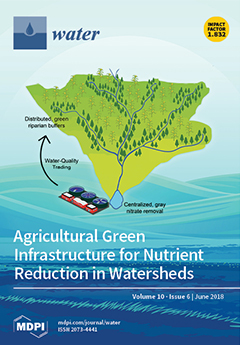Surface sediment samples were collected from 19 sites throughout Daya Bay, China to study the concentrations, spatial distributions, potential ecological risk, and possible sources of heavy, including metals copper (Cu), zinc (Zn), arsenic (As), cadmium (Cd), nickel (Ni), lead (Pb), mercury (Hg), and
[...] Read more.
Surface sediment samples were collected from 19 sites throughout Daya Bay, China to study the concentrations, spatial distributions, potential ecological risk, and possible sources of heavy, including metals copper (Cu), zinc (Zn), arsenic (As), cadmium (Cd), nickel (Ni), lead (Pb), mercury (Hg), and chromium (Cr). The mean concentrations of the eight heavy metals were 24, 109, 6.5, 0.09, 35.3, 26.8, 0.07, and 109 µg g
−1, respectively. The concentrations of most heavy metals were within range of those recorded in previous years. The spatial distribution pattern of most heavy metals were similar, with lowest values recorded along the southeast coast and the open sea area; the highest values were recorded in the northern Daya Bay, especially the northwest. Cu, Zn, As, Cd, Pb, and Hg were classified as Class I, and Ni and Cr were classified as Class II according to the Sediment Quality Guidelines (SQGs) of China. The potential ecological risk (
Eif) indices of Cu, Zn, As, Pb, Ni, and Cr specify that these metals pose low risk to the ecosystem of the Bay, whereas Cd and Hg pose a very high risk in some sites. The geoaccumulation indices (
Igeo) of Cu, Zn, As, Ni, and Cr specify weak or no pollution in Daya Bay, whereas those of Pb, Cd, and Hg in some sites indicate moderate or even high pollution. Spatial distribution, carbon/nitrogen analysis, Pearson correlation, and principal components analysis indicated that Cu, Zn, As, Pb, Ni, Cr, total organic carbon (TOC), and total nitrogen (TN) originated from the same sources. Ballast water or sewage from the cargo ships that park at the harbors or anchor in the Bay were the important sources for Cu, Zn, As, Pb, Ni, Cr, TOC, and TN. Other anthropogenic sources, such as agricultural runoff and aquaculture, might also be responsible, whereas Hg and Cd originated from other point sources.
Full article





